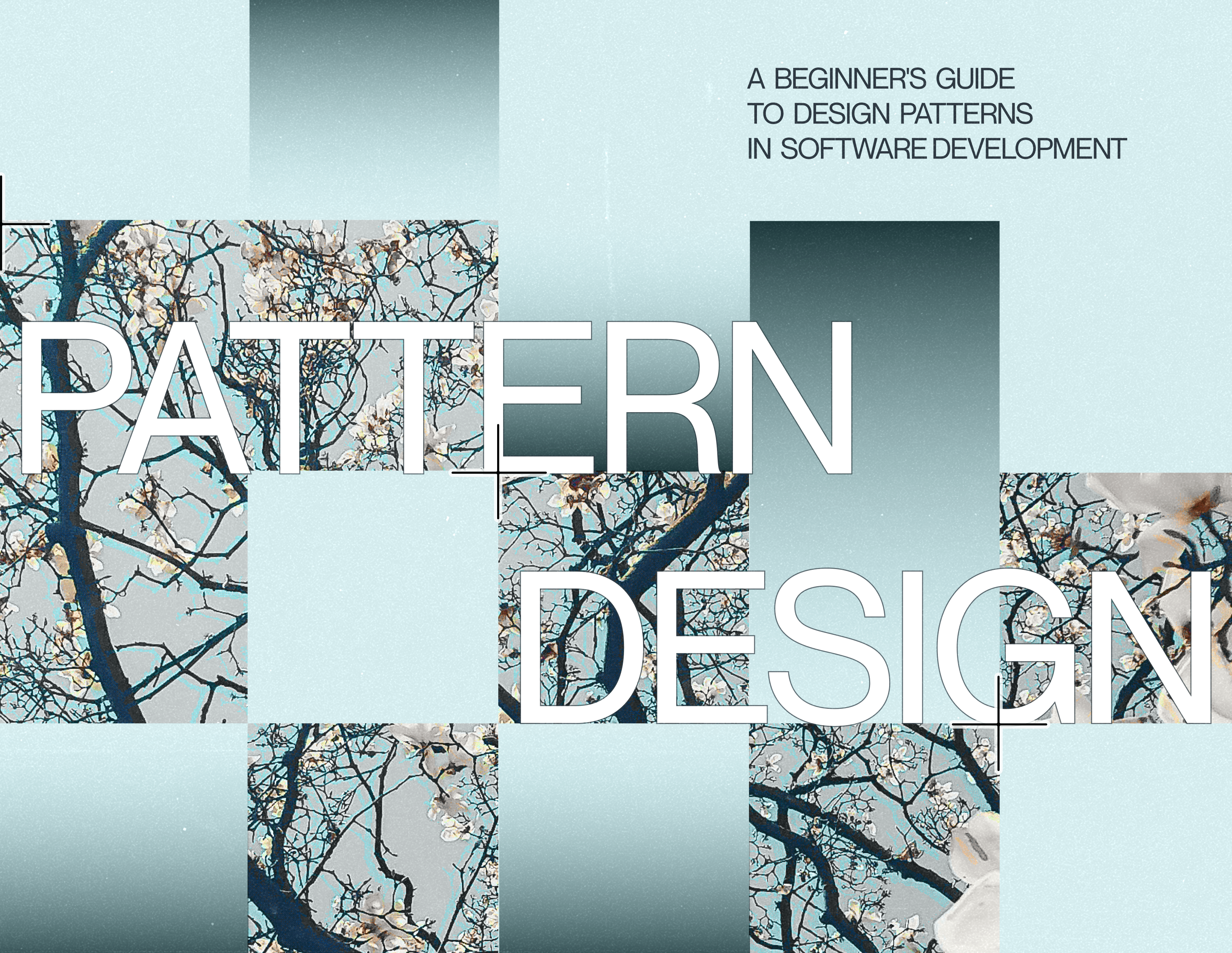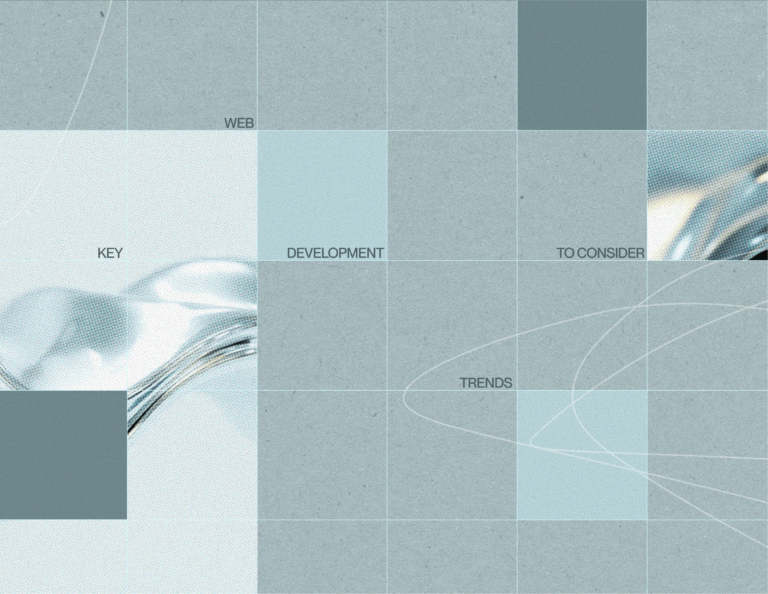Outline:
In today’s swiftly shifting realm of software development services, effective coding calls for a carefully structured approach, especially when building scalable applications. This is precisely where design patterns in software development prove invaluable. Serving as reusable solutions for frequent coding challenges, design patterns provide developers with a toolkit to organize code, foster team collaboration, and streamline overall development.
Recognizing the importance of design patterns in software development can truly transform a developer’s project approach, making their work not only more efficient but also far simpler to maintain.
Getting to Know Design Patterns: The Blueprint for Reusable Solutions
What are design patterns in software development? In essence, design patterns are reusable, proven solutions designed to address common coding challenges. These patterns offer a standardized way to tackle typical issues, from creating objects to enabling seamless interactions between different parts of an application. Within software development, they empower teams to build code that’s well-organized and highly maintainable, leading to efficient, high-quality outcomes.
Over time, the use of design patterns in software development has become an essential practice, allowing developers to proactively identify and address potential issues early in the coding process. By adopting these structured solutions, teams can create resilient code that’s prepared to evolve and scale alongside the project’s demands.
How Design Patterns Shape Software Development
The importance of design patterns in software development is immense. By providing standardized solutions, these patterns simplify complex processes, creating a shared framework that improves communication among developers. With design patterns, teams work within a common language, making code easier to interpret and modify. For example, if a team decides to use a “Singleton” or “Observer” pattern, everyone immediately understands the design approach, reducing the need for in-depth explanations.
A major benefit of design patterns in software development is their ability to streamline coding workflows. Implementing patterns prevents developers from reinventing solutions, saving valuable time and minimizing the risk of errors. Additionally, design patterns promote efficiency by establishing consistent structures that enable quicker development cycles and straightforward code maintenance.
The Three Main Types of Design Patterns
Design patterns are organized into three essential types: creational, structural, and behavioral. Each serves a specific purpose within software design system:
- Creational Patterns: Focus on efficient object creation, ensuring objects are instantiated in ways that support the program’s architecture.
- Structural Patterns: Define relationships among classes and objects, making the code more adaptable and easier to scale.
- Behavioral Patterns: Manage object interactions to ensure smooth and logical communication across the system.
Together, these categories provide a well-rounded toolkit for solving diverse design challenges.
Creational Patterns: Crafting Objects with Precision
Singleton Pattern
The Singleton pattern is a method of restricting a class to a single instance, creating a centralized access point. This approach is especially useful for resource-heavy objects like database connections, loggers, or configuration managers that need to be accessed by various parts of an application. By limiting instantiation to one instance, Singleton reduces memory usage and centralizes resource control, making shared resources more efficient and manageable.
Factory Method Pattern
With the Factory Method pattern, object creation is managed through an interface, with subclasses determining the specific type of object to instantiate. This makes Factory Method highly adaptable, ideal for situations where the exact type of object isn’t predetermined. Commonly used in GUI frameworks, this pattern enables flexible customization of components like buttons, forms, and dropdowns, allowing for a wide range of objects to be created without rigid class calls. This approach maintains code modularity and enhances scalability, enabling future expansions with ease.
Builder Pattern
The Builder pattern is especially useful for creating complex objects with various configurable options, breaking down the construction process into manageable steps. By incrementally adding components to an object, the Builder pattern is ideal for web application development requiring detailed UIs or intricate reports with multiple optional elements. This method keeps the codebase clean, as objects can be customized without cluttering core code, leading to a maintainable structure that easily accommodates future modifications.
Structural Patterns: Organizing Your Codebase for Flexibility
Structural patterns focus on simplifying and optimizing relationships between objects, making code more manageable, adaptable, and scalable. By emphasizing object composition, these patterns help developers organize systems with flexibility and clarity.
Adapter Pattern
The Adapter pattern acts as a bridge between incompatible interfaces, enabling existing classes to work together seamlessly. This pattern is particularly valuable when incorporating new features into older or legacy systems, where direct integration may not be possible due to compatibility issues. Similar to how a power adapter allows foreign devices to function with local sockets, the Adapter pattern “adapts” one interface to match another, facilitating smooth interaction between disparate parts of a system.
Facade Pattern
The Facade pattern simplifies complex subsystems by offering a single, unified interface. Through this pattern, developers create a straightforward entry point to access a system’s functionality, reducing dependencies and enhancing modularity. Facade is especially useful for working with intricate libraries or APIs, as it consolidates the required classes and methods into an accessible interface. This streamlined approach not only improves usability but also makes the codebase easier to maintain and extend.
Composite Pattern
The Composite pattern allows developers to handle individual objects and groups of objects in a uniform way, making it ideal for managing hierarchical structures. Commonly used for organizing user interface elements or file directories, the Composite pattern treats both single components and complex structures as one entity, simplifying manipulation and reducing code complexity. This approach is particularly effective in systems where objects are naturally nested in parent-child relationships, such as menus, toolbars, or directory trees.
Behavioral Patterns: Streamlining Object Communication
Behavioral patterns are essential for managing communication and collaboration between objects, ensuring interactions are efficient while keeping dependencies minimal. These patterns are crucial for applications requiring dynamic interactions between multiple components.
Observer Pattern
The Observer pattern establishes a one-to-many relationship, where changes in one object are automatically communicated to multiple other objects. This is particularly valuable in event-driven programming, where various components respond to user actions or system updates. For example, in graphical user interfaces, an action like clicking a button can trigger updates across multiple UI elements.
By employing the Observer pattern, developers ensure real-time responsiveness without direct dependencies, keeping code modular and adaptable.
Strategy Pattern
The Strategy pattern provides a flexible approach to selecting algorithms at runtime, enabling developers to define a family of algorithms and switch between them as needed. This is especially useful for systems that require behavior adjustments, such as payment processing, sorting methods, or data validation.
By encapsulating algorithms within interchangeable strategies, developers can modify or replace behaviors without altering the surrounding code, enhancing the system’s adaptability and allowing for quick implementation of new options.
Command Pattern
The Command pattern encapsulates requests as standalone objects, allowing actions to be stored, queued, and executed independently. This pattern is particularly useful for features like undo and redo, as it separates the request for an action from the action itself.
With Command, each user action is recorded as an object in an action history, providing the flexibility to reverse, repeat, or modify past actions as needed.This makes Command an ideal choice for applications where users may need to backtrack or adjust previous inputs, like in text editors, drawing programs, or workflow applications.
Real-World Applications of Design Patterns
Design patterns are integral to the success of many high-traffic applications, enabling companies to tackle complex issues efficiently. Here’s how some top companies use these patterns to enhance performance and user experience.
Airbnb: Observer Pattern for Instant Updates
At Airbnb, the Observer pattern keeps users updated on property availability. When multiple users are interested in a listing, any status change triggers automatic notifications to all, ensuring no one is left in the dark. This real-time responsiveness reduces confusion and keeps users engaged.
The Observer pattern lets Airbnb manage updates seamlessly without duplicating code, ensuring data remains current and reliable across the platform.
Amazon: Strategy Pattern for Customized Recommendations
Amazon’s recommendation engine relies on the Strategy pattern to tailor product suggestions. By dynamically selecting algorithms based on user activity, Amazon delivers highly personalized recommendations without reworking the codebase for each new feature or update.
The Strategy pattern gives Amazon the flexibility to refine recommendations easily, helping drive engagement and sales by offering a custom experience.
LinkedIn: Facade Pattern for Efficient Data Access
LinkedIn uses the Facade pattern to streamline backend complexity, consolidating data requests into a single interface for the frontend. This approach simplifies login data retrieval, reducing load times and making the app more user-friendly.
By minimizing backend dependencies, LinkedIn improves system performance and creates a more efficient and maintainable code structure.
Spotify: Composite Pattern for Seamless Playlists
Spotify’s Composite pattern enables uniform handling of playlists, whether they contain songs, albums, or other playlists. This structure supports easy customization, ensuring users can build and manage collections effortlessly.
The Composite pattern reduces code complexity, allowing Spotify to enhance playlist features without disrupting existing functionality, providing a flexible and intuitive user experience.
Starting with Design Patterns: Practical Tips for New Developers
For newcomers, learning design patterns in software development may seem daunting, but with the right approach, it becomes much more manageable. Here are some practical steps to help you integrate patterns into your development workflow.
01 Begin with Fundamental Patterns
Start by learning core patterns that have straightforward applications, such as Singleton, Factory, and Observer. These patterns are easier to grasp and widely used across various applications. Mastering these basics provides a strong foundation, giving you the confidence to explore more complex patterns like Composite or Decorator down the line.
02 Analyze Real-World Examples
Observing how design patterns are used in real projects is invaluable. Study open-source repositories on platforms like GitHub, where experienced developers incorporate patterns into complex systems. Documenting your findings will help you identify which patterns are commonly used in specific contexts, such as design patterns in web development or backend architecture, giving you practical insights beyond theory.
03 Implement Patterns in Personal Projects
Applying patterns in your own projects solidifies your understanding. Try using the Observer pattern in a weather app for real-time notifications or the Factory pattern to create diverse product types in an e-commerce model. Hands-on practice reinforces your learning, making pattern implementation second nature.
04 Take Advantage of Online Courses
Many online courses break down complex design pattern concepts with hands-on projects and interactive exercises. Platforms like Coursera and Udemy offer courses that guide you through pattern usage step-by-step, often including quizzes and project assignments to reinforce your skills as you progress.
05 Collaborate in Team Projects
Working with a team exposes you to real-world constraints like project scope, deadlines, and team preferences, which require critical thinking about pattern choice. Collaboration also allows you to learn from peers, broadening your understanding of different approaches and deepening your knowledge of practical pattern application.
06 Build a Personal Pattern Library
As you learn each pattern, create a “pattern library” with notes on each pattern’s purpose, strengths, and limitations, along with real-world examples. This personal reference will be a valuable tool in future projects, giving you quick access to proven solutions when tackling new challenges.
07 Practice Refactoring with Patterns
Refactoring your code is an excellent way to see patterns in action. Look for areas where design patterns could improve readability, efficiency, or scalability. Applying patterns to refactor existing code reveals how they solve specific issues and strengthens your ability to use them effectively in real scenarios.
On a Final Note
Using design patterns in software development empowers developers to create scalable, efficient, and maintainable code structures. From optimizing object creation with creational patterns to enhancing communication through behavioral patterns, design patterns are essential in modern software development services. Embracing these practices early on gives developers the tools to handle complex projects with confidence, ensuring their work is both robust and adaptable for the future.
If you’re ready to take your development projects to the next level with expertly crafted design solutions, contact us to explore how our team can support your goals. We’re here to help you build a strong foundation for lasting success.





